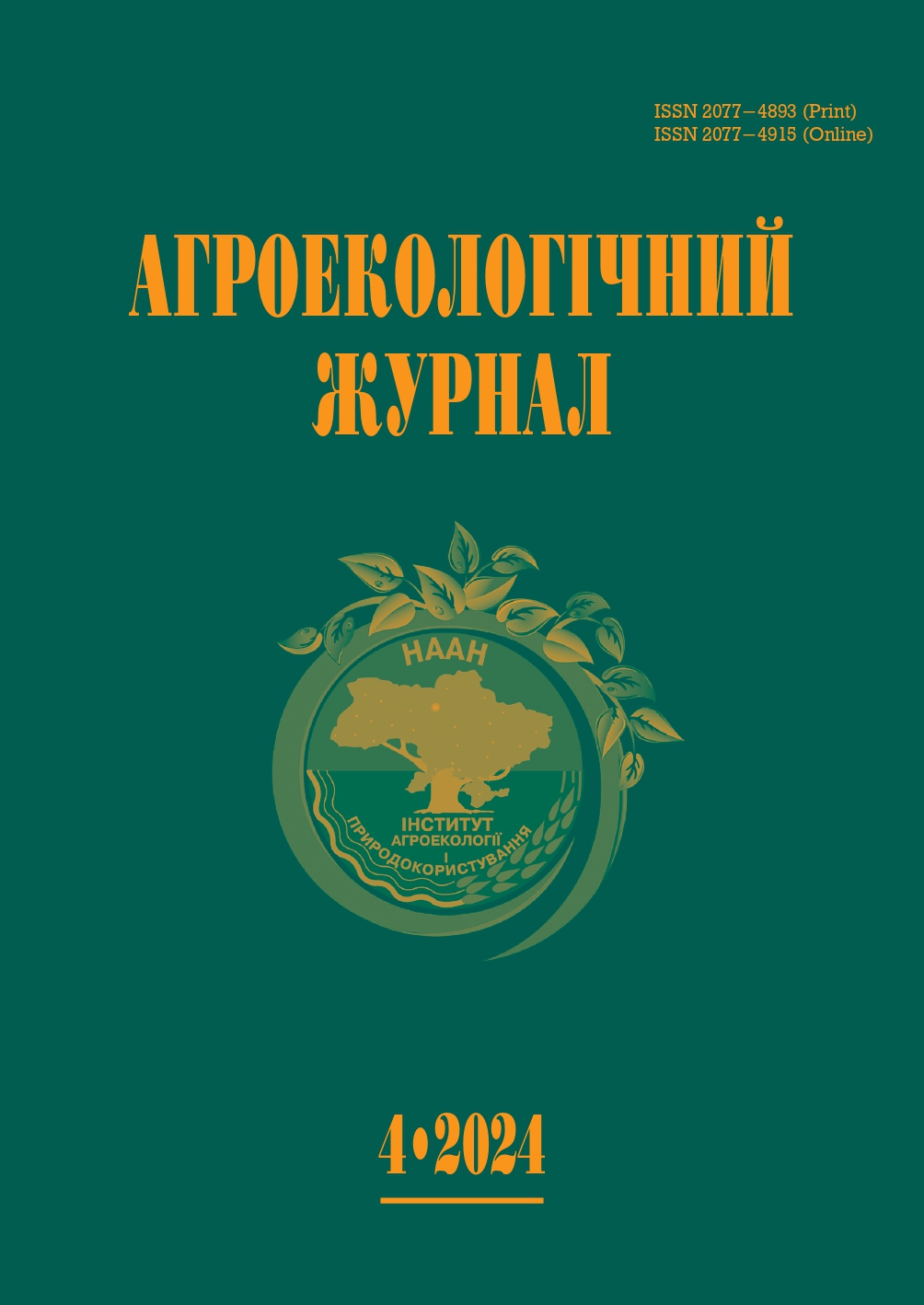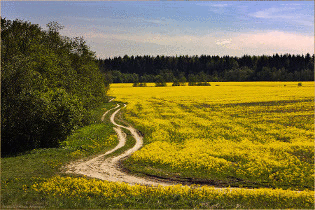Біопрепарати в Україні та світі: сучасні тренди та перспективи
DOI:
https://doi.org/10.33730/2077-4893.4.2024.317163Ключові слова:
мікроорганізми, бактерії, мікроміцети, біоінсектициди, біофунгіциди, деструктори, інокулянти, біородентициди, біоагентиАнотація
Біопрепарати — це екологічно безпечні засоби захисту рослин і беззаперечна альтернатива пестицидам та агрохімікатам. Сектор біопрепаратів, де діючим агентом є мікроорганізми (бактерії, мікроміцети, стрептоміцети)– найбільшим і становить понад 60%. Світовими лідерами виробництва біопрепаратів є більше ніж 500 компаній із США, Європейського Союзу, Китаю, Індії та ін. Найвідомішими лідерами біопрепаратів є BASF SE, Syngenta AG, Bayer AG, UPL, Corteva Agriscience та багато інших. У 2023 р. світовий ринок біопрепаратів сягав 5,23 млрд дол. США, до 2032 р. прогнозується зростання на рівні 20,4 млрд дол. США. В умовах сьогодення в Україні функціонує 24 біопідприємства, які пропонують вітчизняним агровиробникам понад 38 біопрепаратів різної дії. Останніми роками український ринок біопрепаратів зазнає значних змін, частка попиту на інокулянти (азотфіксаторів) зменшилася від 65% до 27,2% на користь біофунгіцидів, де зацікавленість від 27% зросла до 63,5%. Не менш важливою характеристикою біопрепарату для виробників є спосіб внесення в агроекосистему. Найпоширенішими є біопрепарати для оброблення на листках у вигляді спрея — 64%, оброблення передпосівного матеріалу (насіння) — 23, внесення у ґрунт — 10, деструктори та препарати для зберігання врожаю не більше — 3%. Не менш цінною є препаративна форма біопрепарату, що впливає на спосіб застосування, термін зберігання та сумісність з іншими препаратами. На ринку найбільше пропозицій рідких та у вигляді суспензії біопрепаратів — понад 60%, порошкових (суха форма) — 30, гранульованих — менше 10%. Деградація 33% ґрунту у світі, забруднення навколишнього середовища, виникнення стійких шкідників та хвороб сільськогосподарських культур, постійно зростаюча чисельність населення і дефіцит еколого-безпечних харчових ресурсів для людства сприяють не лише популяризації біопрепаратів, а роблять їх безсумнівним трендом для агровиробників. Все це пов’язано з перевагами біопрепаратів, а саме високою біологічною активністю до вибраної мішені, відсутністю післядії та періоду очікування від оброблення до збору врожаю, фітотоксичністю, появою резистентності до шкідників та фітопатогенів, безпека для теплокровних тварин і людини, економічність.
Посилання
World Population UNO. (2024). URL: https://www.worldometers.info/world-population/#:~:text=8.2%20Billion%20(current)&text=The%20term%20%22World%20Population%22%20refers,currently%20living)%20of%20the%20world [in English].
Chabaniuk, Ya.V., Sherstoboieva, O.V. & Demianiuk, O.S. (2017). Biodiahnostyka i biobezpeka hruntiv ahroekosystem [Biodiagnosis and biosafety of soils of agroecosystems]. Ahroekolohichnyi zhurnal — Agroecological journal, 2, 142–149. DOI: https://doi.org/10.33730/2077-4893.2.2017.220170 [in Ukrainian].
Global Symposium on Soil Information & Data (GSID24). (2024). URL: https://www.fao.org/globalsoil-partnership/gsid24/en/ [in English].
Convention on Biological Diversity. 2030 Targets (with Guidance Notes). Target 10. «Enhance Biodiversity and Sustainability in Agriculture, Aquaculture, Fisheries, and Forestry». (2024). URL: https://www.cbd.int/gbf/targets/10 [in English].
Convention on Biological Diversity. 2030 Targets (with Guidance Notes). Target 17. «Strengthen Biosafety and Distribute the Benefits of Biotechnology». (2024). URL: https://www.cbd.int/gbf/targets/17 [in English].
Messing, R. & Brodeur, J. (2018). Current challenges to the implementation of classical biological control. BioControl, 63 (1), 1–9. DOI: https://doi.org/10.1007/s10526-017-9862-4 [in English].
Biological Control Program. (2024). URL: https://www.aphis.usda.gov/plant-pests-diseases/biocontrol#:~:text=Biological%20control%20(biocontrol)%20involves%20the,competitors%20to%20suppress%20pest%20populations [in English].
Biocontrol Agents Market — By Active Substance (Microbials, Macro-Organisms, Bio-chemicals), By Crops (Fruits and Vegetables, Cereals & Grains, Pulses, Others), & By Application (Seed Treatment, On-Field, Post-Harvest) & Forecast, 2024–2032 (2024). URL: https://www.gminsights.com/industryanalysis/biocontrol-agents-market [in English].
Biocontrol agents market. (2024). URL: https://www.stratviewresearch.com/1744/biocontrol-agents-market.html [in English].
Global Biocontrol Agents Market 2024–2033. (2024). URL: https://www.custommarketinsights.com/report/biocontrol-agents-market/#:~:text=Global%20Biocontrol%20Agents%20Market%20was,the%20forecast%20period%202023%20%E2%80%93%202032 [in English].
Shimbori, E.M., Querino, R.B., Costa, V.A. & Zucchi, R.A. (2023). Taxonomy and Biological Control: New Challenges in an Old Relationship. Neotrop Entomol., 52 (3), 351–372. DOI: https://doi.org/10.1007/s13744-023-01025-5 [in English].
Vykorystannia dobryv i pestytsydiv pid urozhai silskohospodarskykh kultur [Use of fertilizers and pesticides for the harvest of agricultural crops]. (2024). URL: https://stat.gov.ua/uk/datasets/vykorystannya-dobryv-i-pestytsydiv-pid-urozhay-silskohospodarskykhkultur-0 [in Ukrainian].
Agricultural Biologicals Market Size, Share, and Trends 2024 to 2034. (2024). URL: https://www.precedenceresearch.com/agricultural-biologicalsmarket [in English].
Biological Control Agents Strategic Report 2022. (2022). URL: https://commodityinsights.spglobal.com/biological_control_agents-2022.html [in English].
Biolohichnyi metod zakhystu roslyn yak vazhlyvyi instrument perekhodu do orhanichnoho ta ekolohichnoho zemlerobstva: praktyka zastosuvannia i perspektyvy dlya Ukrayiny [The biological method of plant protection as an important tool for the transition to organic and ecological agriculture: application practice and prospects for Ukraine]. (2020). URL: http://naas.gov.ua/news/?ELEMENT_ID=6416 [in Ukrainian].
Krutiakova, V., Hulych, O. & Yanse, L. (2023). Stan i problemy rynku biolohichnykh zasobiv zakhystu roslyn v Ukraini [State and problems of the market of biological plant protection products in Ukraine]. Bulletin of Agricultural Science, 101, 1, 30–39. DOI: https://doi.org/10.31073/agrovisnyk202301-04 [in Ukrainian].
Derzhavnyi reiestr pestytsydiv i ahrokhimikativ, dozvolenykh do vykorystannia v Ukraini [State register of pesticides and agrochemicals approved for use in Ukraine]. (2024). URL: https://eco.gov.ua/registers/perelik-pesticidiv-i-agrohimikativ-dozvolenih-dlyavikoristannya [in Ukrainian].
Krutylo, D.V., Nadkernychna, O.V., Sherstoboieva, O.V. & Ushakova, M.A. (2018). Korektsiia ryzobialnykh uhrupovan gruntu za introduktsii Bradyrhizobium japonicum riznykh henetychnykh hrup [Correction of soil rhizobial communities by introduction of Bradyrhizobium japonicum of different genetic groups]. Ahroekolohichnyi zhurnal — Agroecological journal, 2, 73–81. DOI: https://doi.org/10.33730/2077-4893.2.2018.157839 [in Ukrainian].
Kots, S.Ya., Vorobey, N.A., Kyrychenko, O.V. et al. (2016). Microbiological preparations for agriculture. Institute of Plant Physiology and Genetics NAS of Ukraine. Kyiv: Logos [in English].
Morgun, V.V. & Kots, S.Y. (2018). The role of biological nitrogen in nitrogen nutrition of plants. Bulletin of the National Academy of Sciences of Ukraine, 1, 62–74. DOI: https://doi.org/10.15407/visn2018.01.062 [in English].
Bourak, K., Oulkhir, F.E., Maghnia, F.Z. et al. (2024). A Comprehensive Approach Combining Short-Chain Polyphosphate and Bacterial Biostimulants for Effective Nutrient Solubilization and Enhanced Wheat Growth. Microorganisms, 12, 1423. DOI: https://doi.org/10.3390/microorganisms12071423 [in English].
Sherstoboieva, O.V., Bunas, A.A. & Demianiuk, O.S. (2020). Vplyv poperednykiv ta peredposivnoi inokuliatsii nasinnia shtamom Azotobacter vinelandii 12M na vrozhainist kukurudzy i aktyvnist protsesu azotfiksatsii [Effect of precursors and pre-sowing seed inoculation with Azotobacter vinelandii 12M strain on corn yield and nitrogen fixation process activity]. Zbalansovane pryrodokorystuvannia — Balanced natue using, 1, 120–128. URL: http://journals.uran.ua/bnusing/article/view/203941 [in Ukrainian].
Van Lenteren, J.C., Bolckmans, K., Köhl, J. et al. (2018). Biological control using invertebrates and microorganisms: plenty of new opportunities. BioControl., 63, 39–59. DOI: https://doi.org/10.1007/s10526-017-9801-4 [in English].
Kumar, N. & Khurana, P.S.M. (2021). Trichodermaplant-pathogen interactions for benefit of agriculture and environment. Biocontrol Agents and Secondary Metabolites, 41–63. DOI: https://doi.org/10.1016/B978-0-12-822919-4.00003-X [in English].
El-Sharkawy, H.H.A., Abbas, M.S., Soliman, A.S. et al. (2021). Synergistic effect of growth-promoting microorganisms on bio-control of Fusarium oxysporum F. sp. pisi, growth, yield, physiological and anatomical characteristics of pea plants. Pesticide Biochemistry and Physiology, 178. DOI: https://doi.org/10.1016/j.pestbp.2021.104939 [in English].
Lahlali R., Ezrari S., Radouane N. et al. (2022). Biological Control of Plant Pathogens: A Global Perspective. Microorganisms, 10, 596. DOI: https://doi.org/10.3390/ microorganisms10030596 [in English].
Ugur, A., Jouzani, Gh.S., Sansinenea, E. & SanchisBorja, V. (2023). Biotechnological advances in Bacillus thuringiensis and its toxins: Recent updates. Reviews in Environmental Science and Biotechnology, 22 (2), 319–348. DOI: https://doi.org/10.1007/s11157-023-09652-5ff [in English].
Eads, D.A., Jaronski, S.T., Biggins, D.E. & Wimsatt, J. (2021). Insect Pathogenic Fungi for Biocontrol of Plague Vector Fleas: A Review. Journal of Integrated Pest Management, 12, 1, 30. DOI: https://doi.org/10.1093/jipm/pmab028 [in English].
Sherstoboieva, O.V., Kryzhanivskyi, A.B. & Kryzhko, A.V. (2021). Ekolohichni perevahy zastosuvannia mikrobiometodu v intehrovanii systemi zakhystu roslyn [Ecological advantages of using the microbiomethod in the integrated system of plant protection]. Ahroekolohichnyi zhurnal — Agroecological journal, 3, 27–32. DOI: https://doi.org/10.33730/2077-4893.3.2021.240318 [in Ukrainian].
Yüksel, E., Özdemir, E., Albayrak Delialioğlu, R. & Canhilal, R. (2022). Insecticidal activities of the local entomopathogenic nematodes and cell-free supernatants from their symbiotic bacteria against the larvae of fall webworm, Hyphantria cunea. Experimental Parasitology, 242. DOI: https://doi.org/10.1016/j.exppara.2022.108380 [in English].
Dhakal, R. & Singh, D.N. (2019). Biopesticides: A Key to Sustainable Agriculture. Int. J. PureApp. Biosci, 7 (3), 391–396. DOI: http://dx.doi.org/10.18782/2320-7051.7034 [in English].
Biorat a natural biological rodenticide against rats and mice. (2024). URL: https://www.ideassonline.org/public/pdf/br_24_18.pdf [in English].
##submission.downloads##
Опубліковано
Номер
Розділ
Ліцензія

Ця робота ліцензується відповідно до Creative Commons Attribution 4.0 International License.
Авторське право і ліцензування
Умови ліцензії: автори зберігають авторські права і надають журналу право першої публікації з роботою, одночасно ліцензованої за ліцензією Creative Commons Attribution License International CC-BY, яка дозволяє іншим ділитися роботою з визнанням авторства роботи і початкової публікації в цьому журналі.
Якщо стаття прийнята до публікації в «Агроекологічний журнал», автор повинен підписати угоду про передачу авторських прав. Угода відправляється на поштову (оригінал) або адресу електронної пошти (відсканована копія) редакції журналу.
Цією угодою автор підтверджує, що представлені матеріали:
- не порушують авторських прав інших осіб або організацій;
- раніше не публікувались в інших видавництвах і не були представлені для публікації в інших виданнях.
Автор передає редакції «Агроекологічного журналу» права на:
- публікації статті українською (англійською) мовою і поширення її друкованої копії;
- поширення електронної копії статті, а також електронної копії перекладу статті на англійську мову (для статей українською мовою), будь-якими електронними засобами (розміщення на офіційному сайті журналу, електронних баз даних, сховищ тощо) друкована копія перекладу.
Автор залишає за собою право без згоди редакції та засновників:
- Використовувати матеріали статті повністю або частково в ознайомлювальних цілях.
- Використовувати матеріали статті повністю або частково для написання власних дисертацій.
- Використовувати матеріали статті для підготовки тез доповідей, доповідей конференцій, а також усних доповідей.
- Додати електронні копії статті (включаючи остаточну електронну копію, завантажену з офіційного сайту журналу) за адресою:
- персональні веб-ресурси всіх авторів (веб-сайти, веб-сторінки, блоги тощо);
- веб-ресурси установ, в яких працюють автори;
- некомерційні веб-ресурси відкритого доступу (наприклад, arXiv.org).
У всіх випадках наявність бібліографічного посилання на статтю або гіперпосилання на її електронну копію на офіційному сайті журналу є обов'язковим.



